Film Room: How the Cardinals' defense continues to thrive despite injuries
In 2013, the Arizona Cardinals' defense was one of the NFL’s best. It was top 10 in many important statistical categories. Arizona allowed the eighth-lowest quarterback rating, second-fewest yards per carry and forced the fifth-most interceptions.
Defensive coordinator Todd Bowles had high hopes for the defense going into his second year with the club, but expectations came to a crashing halt when he lost several key playmakers.
Gone are Karlos Dansby and Daryl Washington, two linebackers who plagued quarterbacks with their quickness and playmaking ability. Dansby left for the Cleveland Browns in free agency, and Washington was suspended - again.
Darnell Dockett and Calais Campbell, pass-rushing anchors up front, both suffered serious injuries earlier this season. And in the secondary, Tyrann Mathieu’s playing on a limited snap count as he recovers from left ACL and LCL tears.
None of these losses have stopped Bowles from continuing to stress out offensive coordinators in 2014. He’s adjusted, like he always does, and has put together another strong defensive unit.
His defense has held all but one team (Denver Broncos, 41 points) below their weekly scoring average. The Cardinals have done it because Bowles puts his players in situations that play to their strengths.
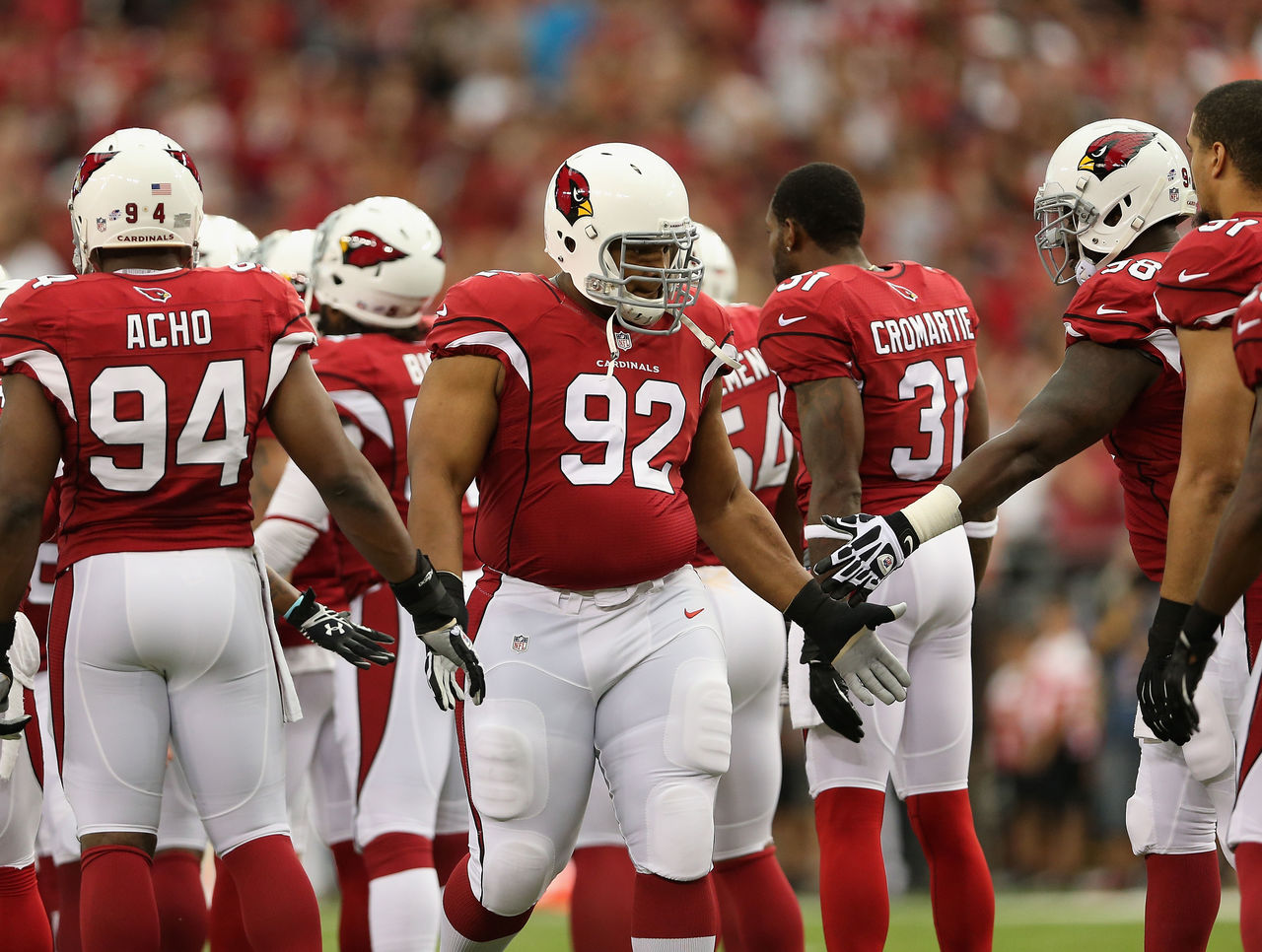
His defensive linemen play many different techniques, allowing them to collapse the pocket from the interior against the run. Look at what they did on this first-quarter run against the San Diego Chargers in Week 1.
It was second-and-5 and the Chargers were on their own 25-yard line. They had an open playbook. Their “12” personnel (one back, two tight ends) suggested run. Bowles expected it, calling on a reduced three-man front.
A reduced front moves the typical four- or five-technique ends inside to the three-technique, reducing their splits. That puts them over the outside shoulder of the guards, which is problematic because they aren’t used to an end’s speed and power.
Left to right, Tommy Kelly and Campbell (before he was injured) were the ends. They are both versatile, particularly excelling at the three-technique. Kelly had a brief history of dominance at the position with the Oakland Raiders, racking up 14.5 sacks from 2010 through 2011. Campbell, a seven-year veteran, has been dominating ever since his second season with the Cardinals.
Playing the zero-technique was Dan Williams, a prototypical space-eating nose tackle at 6-foot-2, 327 pounds.
When the play began, the Chargers ran a lead to Kelly’s side. He held up the right guard and tackle with brute strength and a wide base. Opposite of him, Campbell blasted through the left guard, pushing him into the backfield. The run was away from him, though, and he was not a factor other than in back-side support.
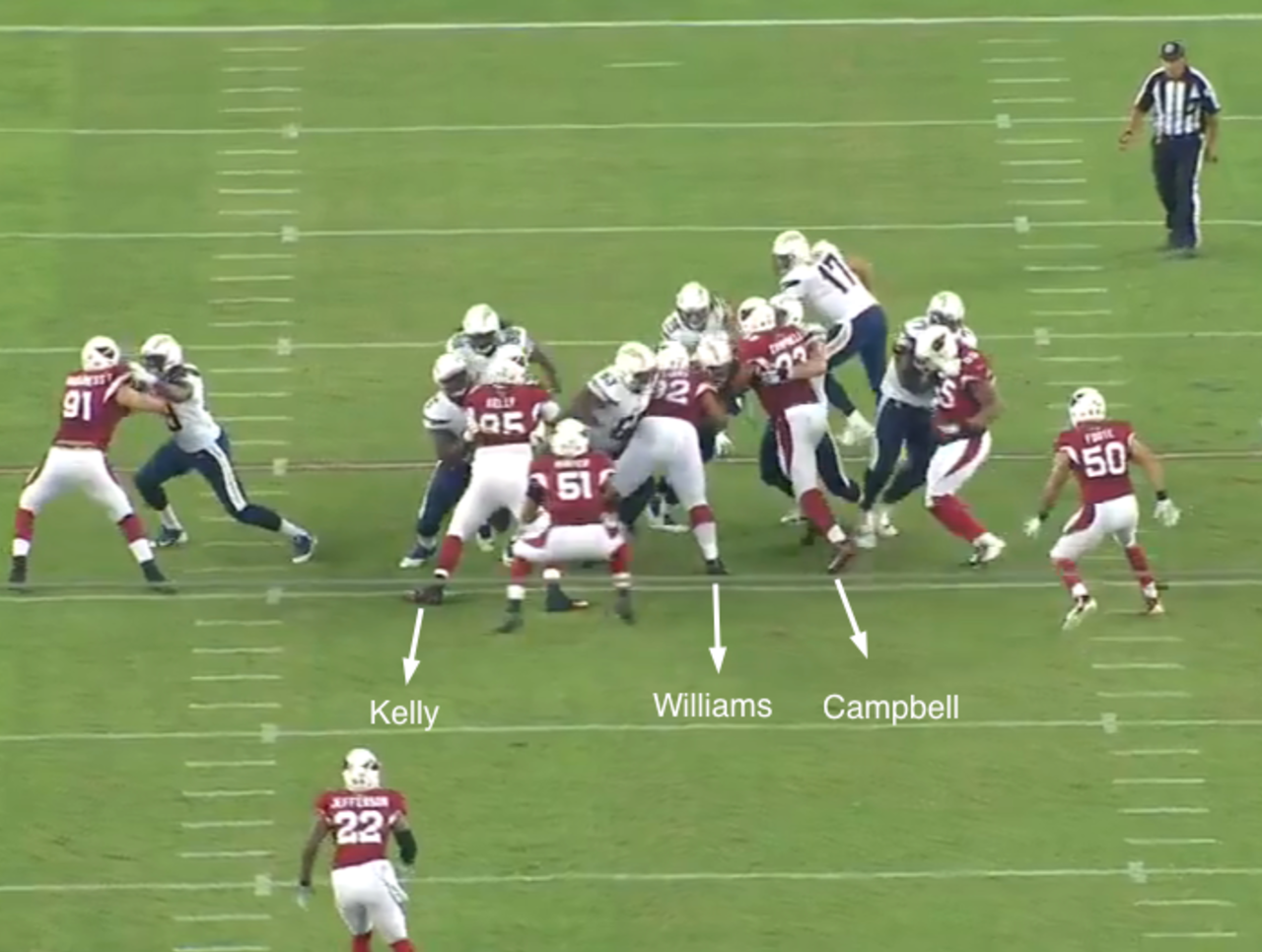
In the middle, Williams lowered his pad level, eating up two blocks. He then pushed the center aside, split the double team and looked around for the running back. He’s to Williams’ left. Williams saw him and used his subtle quickness to reach out and tackle him.
Williams is at his best when he’s plugging from the nose. He swallows up running games like he does 42-ounce porterhouse steaks. He’s not nearly as effective anywhere else on the line. It’s simple, but that’s what makes Bowles good. He knows his players.
Another contributor to the dominating running defense this season, which allows the third-lowest yards per carry (3.2), is rookie strong safety Deone Bucannon, a first-round pick out of Washington State. Many had concerns with his covering ability because he was often a step late getting outside the numbers from the deep middle of the field. His hips were stiff.
What Bowles did was focus on Bucannon’s strengths: physicality, playing downhill, run defense. He was a perfect fit at inside linebacker in nickel and dime packages, replacing Washington. He’s played 232 snaps this season, eighth-most on the team, according to Pro Football Focus. The Cardinals have relied on him to beat pulling guards to the edge and into the backfield, which he’s learning to do as one can see on the first defensive play against the San Francisco 49ers in Week 3.
The 49ers had one back in the backfield and an unbalanced offensive line. Defensively, the Cardinals had a 4-3 Over front. That meant the three-technique defensive tackle was to the strong-side, where Bucannon was, too. Bucannon was five yards across the left tackle that was posing as a tight end.
At the snap, the 49ers ran a power concept, bringing their back-side guard across the formation. Concurrently, Bucannon shot down into the near gap once the rest of the offensive line blocked away from him. That put him one-on-one with the pulling left guard.
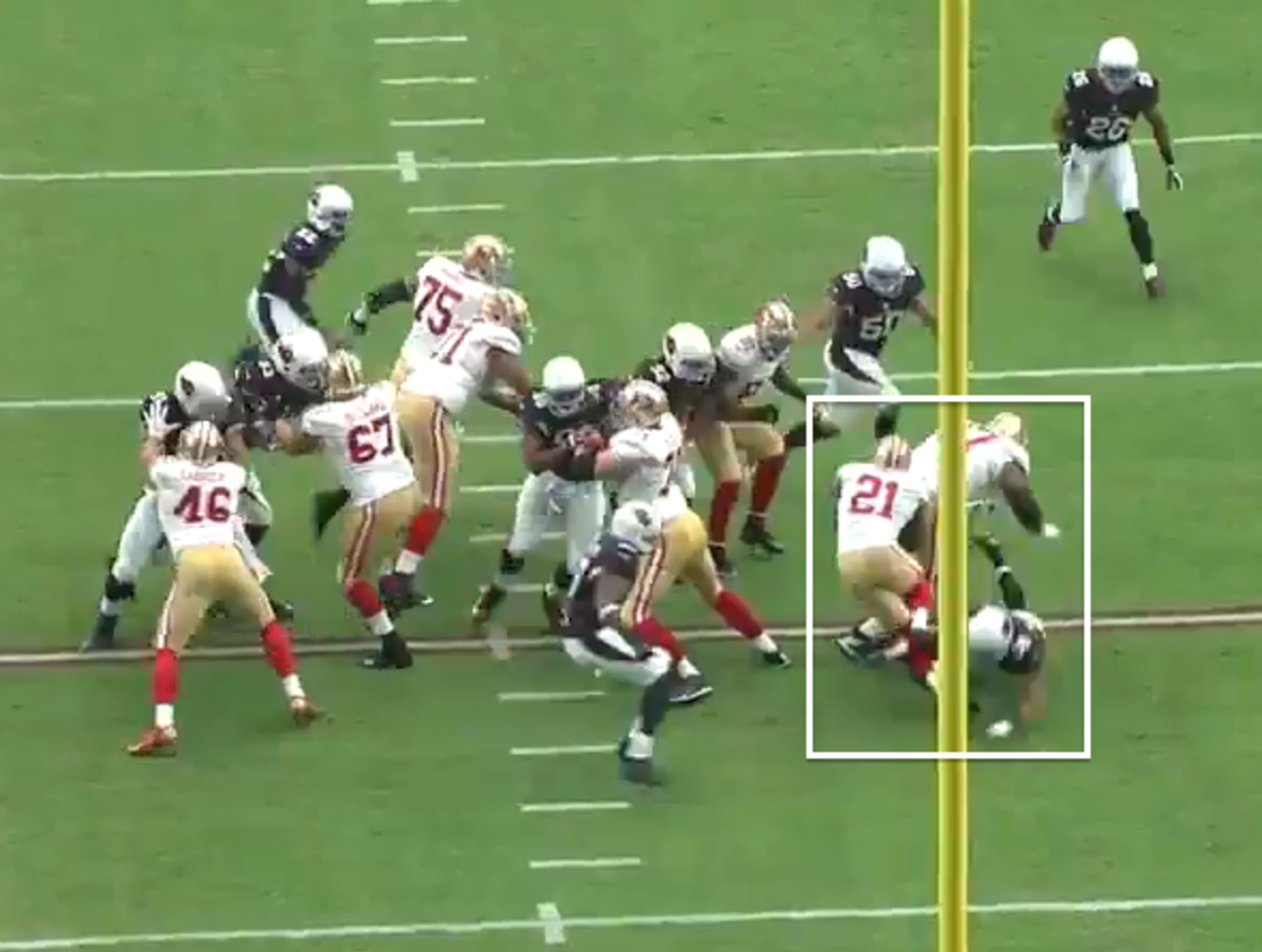
He lowered his pads and dove forward to avoid a mauling blocker, sticking his right arm out to trip the ball-carrier for a one-yard stop.
Bucannon’s not the only defensive back who’s seen significant snaps. Five others, including safeties Rashad Johnson and Tony Jefferson, have seen more snaps. Johnson leads all Cardinals defensive backs with 341 snaps, while Jefferson is fifth with 277 snaps, according to Pro Football Focus.
Bowles’ willingness to use six defensive backs has given the Cardinals flexibility. They can disguise coverages and move players around. Sometimes Johnson plays in the box. Other times he plays in center field. The same holds true for Jefferson. Their versatility also allows for exotic blitzes, like they called in the third quarter of the game against the 49ers.
It was third-and-9 at the Cardinals’ 42. The 49ers motioned a wide receiver from the right of the formation to the left. Suddenly their twins set became trips.
The change forced the Cardinals to alter their coverage. It appeared to go from Cover-1 to Cover-0. The strong safety, Mathieu, came down and so did two other defensive backs. One of them was Jerraud Powers. They were in front of the two receivers off the line.
The Cardinals had a sound blitz concept to the left: five defensive backs were covering three receivers. Only one was showing blitz.
On the other side of the formation, Bucannon and cornerback Antonio Cromartie showed blitz to go along with three down linemen.
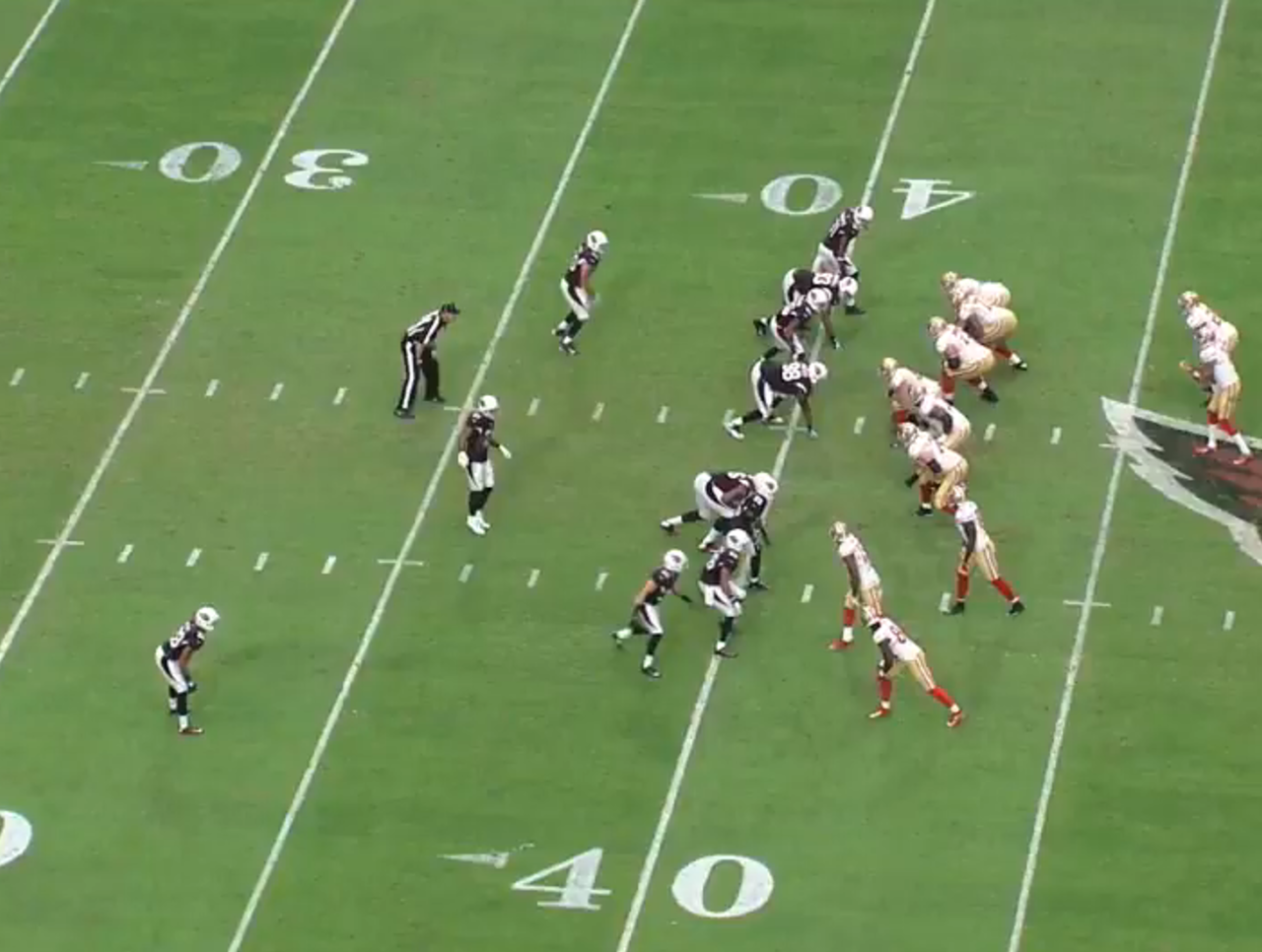
To adjust to the potential weak-side blitz, the 49ers slid their entire offensive line to their right. Bucannon dropped in coverage, while Cromartie blitzed outside. A linebacker came on a delayed blitz behind him. The three down linemen sticked left and down the line of scrimmage. On the back-side, no one blocked Powers and Mathieu.
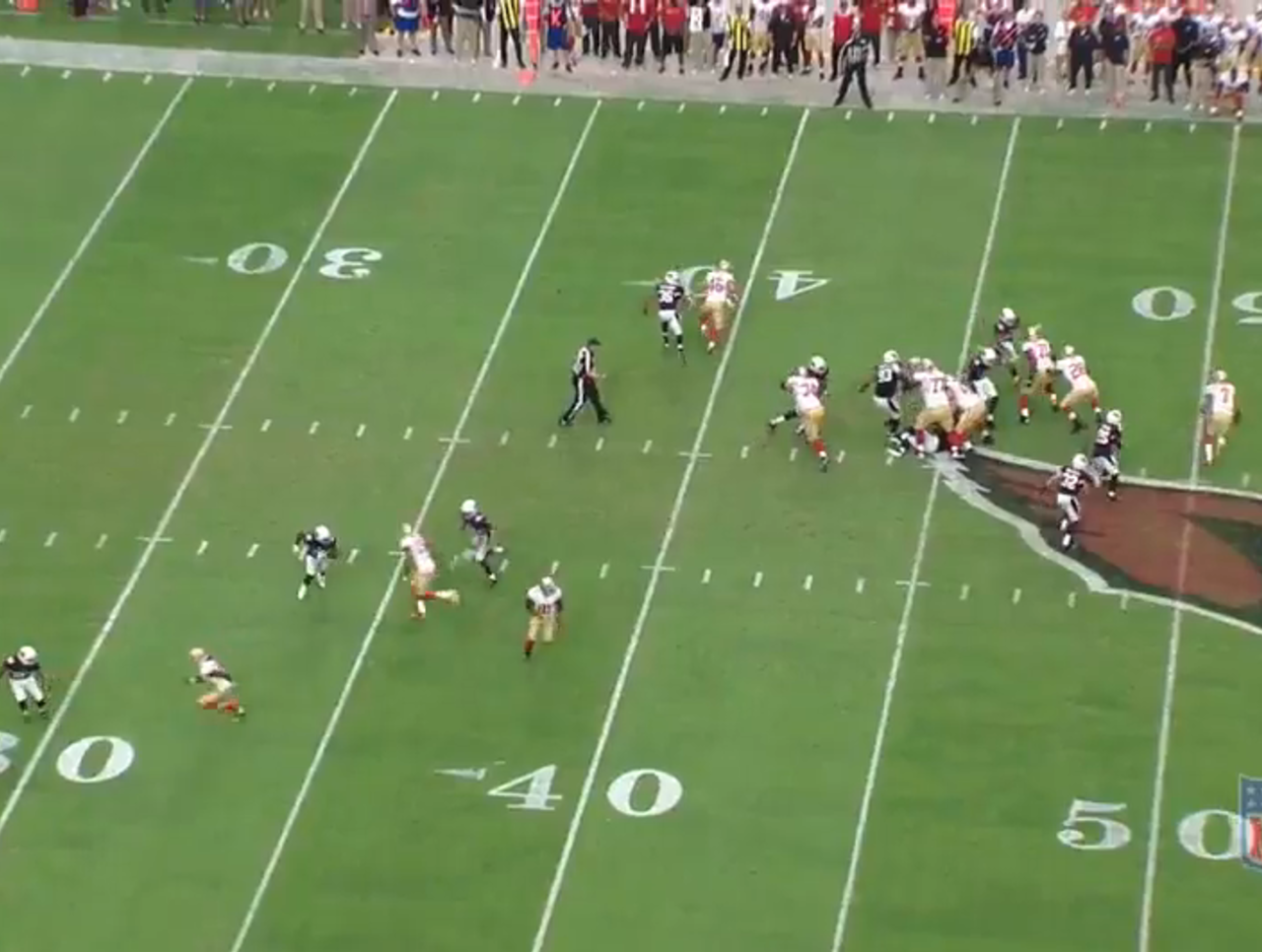
The two forced the 49ers' quarterback to look away from the trips set, away from where his receivers were man-covered by the Cardinals’ defensive backs. He looked to his right, where there was only a tight end. The tight end was covered well by Bucannon. With no other choice, the quarterback threw the ball away.
Bowles’ exotic packages and blitz concepts have made it difficult for signal-callers and blockers to identify who is coming downhill. He’s essentially used only one inside linebacker all season, relying on 13-year veteran Larry Foote to bring stoutness in run defense and reliability in communication. Foote’s played a team-high 346 snaps.
In the secondary, Bowles has primarily called single-high coverages. It’s often Cover-1 Robber, leaving his cornerbacks isolated in man coverage while a free safety roams over the top and a strong safety (or inside linebacker) roams underneath. The coverage lets them focus on what they do best.
That’s why Bowles’ defense is one of the best again despite the absence of so much talent this season.